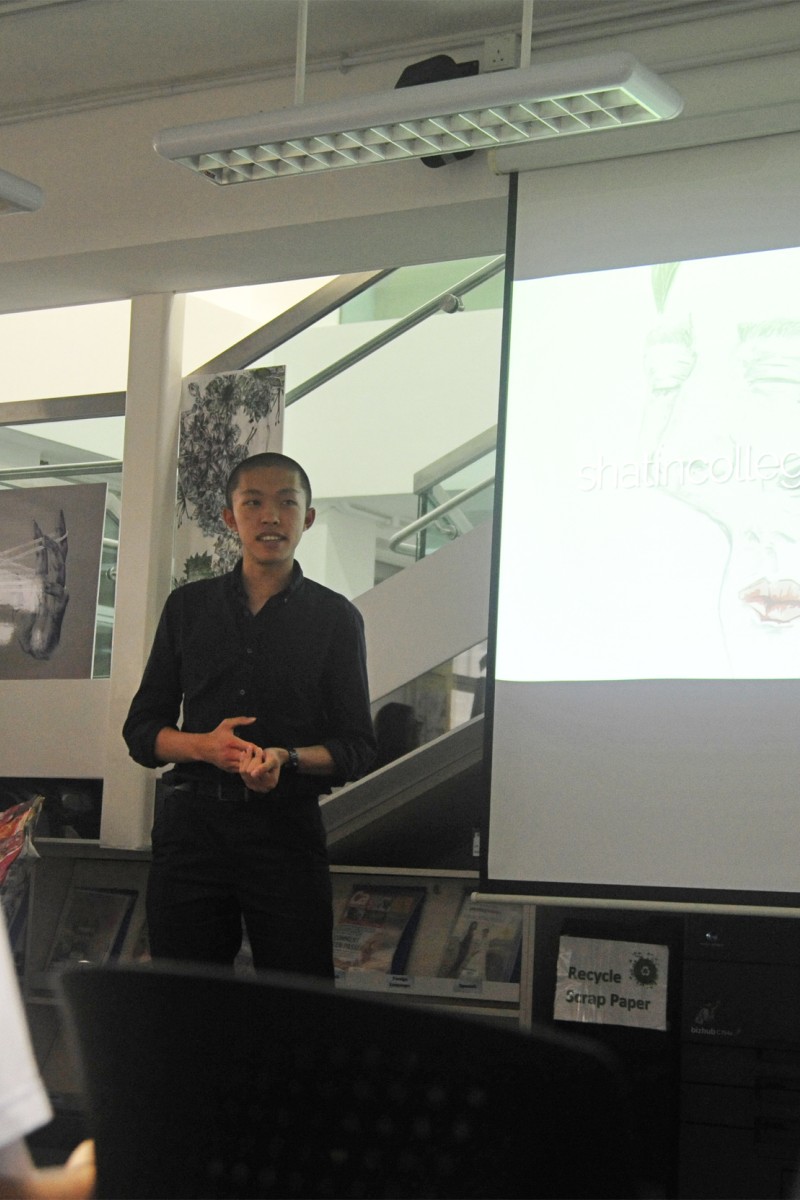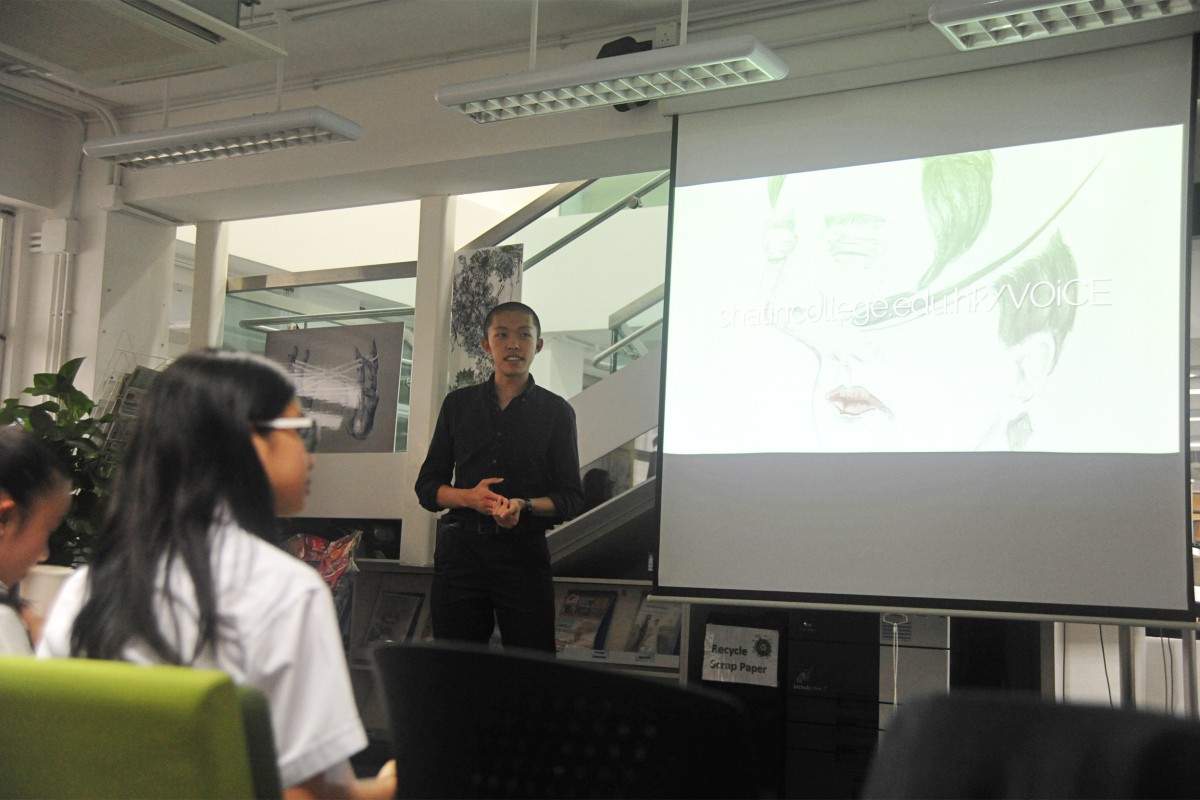
Sha Tin College's arts magazine VOiCE raises question of identity
Junior Reporter Veronica Lin talks to the editor and a contributor of the school's 14th edition
 VOiCE Editor-in-Chief Henry Lui says this year the "I" in the magazine title represents "identity".
VOiCE Editor-in-Chief Henry Lui says this year the "I" in the magazine title represents "identity". The lowercase “i” in the name of the Sha Tin College literary magazine, VOiCE, has somehow outwitted autocorrect for more than a decade – and the editorial team don’t even know why it’s there. To “pay tribute to the letter [they] have snubbed for the past 13 years,” writes the magazine's editor-in-chief Henry Lui, the theme for its 14th volume (VOiCE XIV) is “I”, as in identity.
The publication contains 16 pieces of writing, and a number of artworks. Though each addresses a different issue, all of the pieces are connected by two “I”s: “the diversity of written and visual art is a testament to the individual ‘I’,” writes Lindsay Tanday, head of the English faculty, in the magazine's foreword, “whilst this publication as a complete and singular entity is a testament to a collective ‘I’”.
Despite the fact that teenagers are generally thought not to have a grasp of “identity”, the students at Sha Tin College have proved otherwise in this publication. Their thorough understanding and interpretations of issues such as gender, and ethnic backgrounds, demonstrate their abilities to put themselves in the shoes of those who are either struggling to establish their own identities or discriminated by society for their inability to fit in.
Joyce Leung, a Year 12 student, wrote the short story She for the magazine. Inspired by a news story about a lesbian who couldn’t marry her partner, Joyce wrote a vivid internal monologue that perfectly captures the wonder and emotional upheavals of a transgender male named Noah, as he reintroduces himself to the world as a female. As one can imagine, Noah’s experience of coming out of to his teachers and classmates is filled with challenges, confusion and above all the shun ning that takes place at school each day.
“Who could be more confused about their identities than [transgender people]?” Joyce asks.
Unfortunately, Noah’s fictional story can be seen in real-life society because, despite the fact that Hong Kong has come a long way in terms of protecting certain rights of homosexual and transgender people, the stigma of “non-mainstream” sexual orientation is too deeply rooted in too many conservative or religious individuals’ psyches.
“Discrimination is inevitable because [the concept of transgenderism] is foreign to many people, as most of them don't have a thorough understanding of it,” says Joyce. One of her goals in writing this story is to remind people that these issues still exist, and it’s important for us all to be aware of them.
In an effort to make the magazine as unbiased as possible, the team chose a sketch by Au Long-yin Au for the cover: a sketch of what is essentially a gender-neutral face. Henry believes that “the [sketch of a] face is the easiest way to represent someone’s identity”; in his opinion, a very fitting physical representation of the theme.
